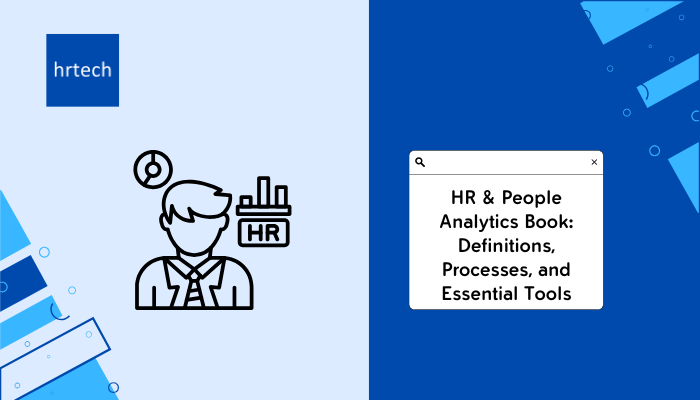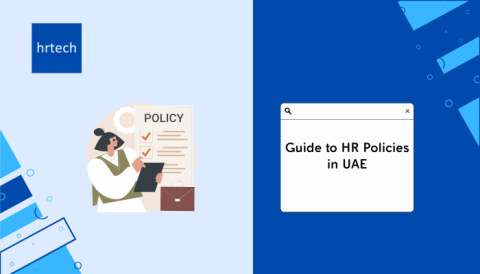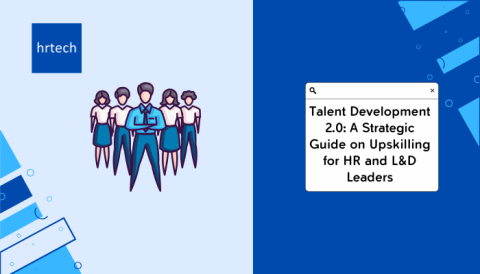As HR becomes increasingly data-driven, more organizations are turning to HR & People Analytics books for guidance. These resources help businesses gain insights about their workforce, optimizing everything from recruitment to employee engagement. Research shows that 69% of companies already consider people analytics essential for strategic decision-making. This growing demand highlights the need for a deeper understanding of HR analytics processes, tools, and ethical considerations, making these books invaluable for HR teams ready to enhance productivity and performance through data.
As data takes center stage, HR & People Analytics books cover all aspects of this shift. They introduce readers to foundational concepts, such as the importance of data collection and ethical data management, while also exploring advanced techniques like predictive analytics and AI integration. By combining theory with practical applications, these books become essential guides for HR professionals at every level.
What is HR & People Analytics?
HR & People Analytics, also referred to as “workforce analytics,” is the practice of collecting and analyzing employee-related data to support informed decision-making. The goal is to enhance employee engagement, improve retention, and align HR strategies with business objectives. Think of it as a blueprint that allows organizations to understand workforce behaviors and trends more deeply.
McKinsey’s research shows that the majority of large organizations have people analytics teams,1 70 percent of company executives cite people analytics as a top priority, and there’s little argument that people analytics is a discipline that’s here to stay.
For those new to the field, books on HR analytics provide a thorough foundation, covering the definitions and applications of people analytics. Ready to boost productivity? Download our expert insights on people analytics tools and strategies to elevate your HR approach and achieve your goals.
Why Are HR & People Analytics Books Important?
HR analytics is more than just numbers; it’s about making data-informed decisions that have a direct impact on people. Analytics can help identify trends, such as a dip in employee engagement or an increase in turnover within specific departments, enabling HR teams to intervene before issues escalate. The field’s potential is vast. Companies using people analytics report a 12% improvement in hiring quality and a 15% increase in employee retention.
HR & People Analytics books focus on empowering HR teams with data-driven insights to address these challenges effectively. They provide step-by-step guides to help organizations build a data-driven HR function from scratch, giving readers access to:
- Definitions and foundational knowledge to understand what people analytics is and how it differs from traditional HR.
- Processes for collecting, managing, and analyzing data in ways that yield actionable insights.
- Essential tools and techniques used in people analytics, such as HR dashboards, AI-based predictive tools, and data visualization.
Role in Improving Organizational Performance and Employee Engagement
Books on HR analytics reveal how these tools can improve organizational performance and employee engagement. For example, Google’s People Analytics team found that managers greatly impact team performance. By understanding this, they created manager development programs that increased engagement and team performance by over 75%.
With data, HR can elevate its role from administrative support to a strategic partner in business success. Books on HR analytics show how insights from employee data can transform HR into a driver of organizational excellence.
Core Functions of HR & People Analytics
HR Analytics encompasses various core functions, each contributing to a robust, engaged workforce. These functions are foundational topics in books on HR analytics.
1. Identifying Trends and Patterns in Workforce Data
Analyzing data over time reveals trends that help organizations make proactive decisions. For instance, data analysis might indicate an increase in turnover within certain departments or seasons. Books on HR analytics provide methods to identify these patterns and respond before they impact productivity.
2. Enhancing Recruitment and Talent Management Strategies
Recruitment can be costly and time-consuming. Books on HR analytics discuss how analytics can improve recruitment efficiency by identifying which channels yield the best talent and predicting future talent needs, ultimately saving costs and resources.
3. Supporting Diversity and Inclusion Efforts with Data Insights
Emphasizing diversity and inclusion is essential for a healthy workplace. McKinsey’s research shows that diverse organizations are 36% more likely to outperform less diverse peers. Books on HR analytics explain how data supports these efforts by offering insights into diversity metrics and helping HR establish more equitable practices.
Processes Involved in HR & People Analytics
For effective HR Analytics, a structured process is essential. Books on HR analytics guide readers through the stages, from data collection to implementing evidence based practices.
1. Data Collection and Management
Data collection is the bedrock of analytics. Collecting accurate data on employee demographics, performance, engagement, and turnover is essential. Books on HR analytics outline methods for gathering, storing, and managing data within secure HR Information Systems (HRIS) such as Workday or ADP.
2. Analyzing and Interpreting Workforce Metrics
After data collection, it’s time for analysis. This step could be as simple as monitoring absenteeism rates or as complex as predictive analytics. Books on HR analytics offer various approaches, such as regression analysis, for interpreting metrics and transforming them into actionable insights.
3. Implementing Evidence-Based HR Practices
Once insights are drawn from the data, implementing evidence-based practices is the next step. For example, if data shows that employees with flexible working options are more engaged, HR might establish flexible work policies. Books on HR analytics emphasize the importance of closing the loop by translating data insights into HR policies and practices.
Key Tools and Techniques in HR & People Analytics
The effectiveness of HR Analytics is greatly enhanced by the right tools. Books on HR analytics explore the top tools used for collecting, analyzing, and visualizing data.
HR Dashboards and Reporting Tools
Dashboards provide an accessible view of HR metrics, such as employee satisfaction and turnover rates. Tools like Tableau and Power BI are popular choices for real-time data visualization, making it easier to spot trends. Books on HR analytics discuss how these dashboards provide actionable insights at a glance.
Predictive Analytics and AI in HR
Predictive analytics goes a step further by forecasting future trends. AI-powered tools such as IBM Watson help HR predict employee turnover and identify potential areas for improvement. Books on HR analytics cover how AI can support proactive HR management by providing predictive insights.
Data Visualisation Techniques for Stakeholder Communication
Data visualization simplifies complex data for easy understanding. Graphs, heatmaps, and infographics make data accessible to all stakeholders. Books on HR analytics guide HR professionals in creating effective visualizations for communication and reporting.
| Tool Type | Example Tools | Primary Function |
| HR Dashboards | Tableau, Power BI | Visualizing HR data trends |
| Predictive Analytics | SAP SuccessFactors | Predicting employee turnover |
| AI-Based HR Solutions | Workday, Cornerstone | Enhancing hiring and performance evaluations |
| Data Visualisation | Google Data Studio | Presenting data in accessible formats |
Maximize your HR productivity with our comprehensive insights on tools and strategies for people analytics.
Top Books on HR & People Analytics
To dive deeper into HR Analytics, here are five highly recommended books. These titles offer practical insights, case studies, and best practices for anyone looking to build a data-driven HR strategy.
1. People Analytics in the Era of Big Data by Jean Paul Isson and Jesse S. Harriott
This book explores the vast potential of people analytics within HR. Isson and Harriott discuss the transition from traditional HR practices to data-driven methodologies and how analytics can optimize hiring, employee engagement, and retention. For those looking to build a people analytics strategy, this book provides foundational knowledge and actionable advice.
2.Excellence in People Analytics by David Green and Jonathan Ferrar
Excellence in People Analytics is an essential guide for HR and business leaders aiming to create real value through people analytics. Drawing on over 10 years of the authors’ experience in advising organizations, David Green and Jonathan Ferrar outline the journey from traditional HR functions to a data-driven approach that fosters strategic decision-making.
This book provides practical, step-by-step advice on developing a data-driven culture in HR and aligning analytics with business objectives. Perfect for those wanting to build sustainable business value, Excellence in People Analytics offers actionable insights and a roadmap to transform HR practices using data.
3. Data-Driven HR: How to Use Analytics and Metrics to Drive Performance by Bernard Marr
Bernard Marr’s book focuses on practical, data-driven strategies to enhance HR performance. He discusses specific metrics and analytics techniques that help HR professionals make informed decisions. Covering everything from recruitment to employee development, this book is ideal for readers who want actionable insights rather than just theory.
4. HR Analytics: Quantifying the Intangible – Linking People, Processes, and Analytics by Anshul Saxena
HR Analytics: Quantifying the Intangible is designed for students and HR enthusiasts who want to explore the world of HR analytics with a solid foundational approach. Written by Anshul Saxena, with contributions from editors Sharad Gupta, Kirupa Priyadarsini, Jayant Mahajan, and Jerin Jose, the book breaks down key HR analytics concepts, metrics, and KPIs, particularly in recruitment and employee engagement.
It provides clear definitions of essential terminologies and guides readers through the practical benefits and implementation of analytics in HR processes. This book is ideal for those with a basic understanding of HR, offering a deeper dive into the metrics and processes that drive data-driven HR strategies.
5. People Analytics in der Praxis by Cornelia Reindl and Stefanie Krügl
Written in German, People Analytics in der Praxi is an excellent introductory guide for those interested in data-driven workforce management. Authored by Cornelia Reindl and Stefanie Krügl, with contributions from Christian Vetter, the book covers essential knowledge for implementing people analytics within an organization.
It guides readers on how to use data effectively in employee-related areas to meet the demands of digital HR management. From planning and deploying analytics solutions to evaluating HR tool results and using software efficiently, People Analytics in der Praxis provides a comprehensive foundation for HR professionals aiming to enhance their data capabilities.
These books on HR analytics offer readers a blend of theoretical frameworks, practical applications, and actionable insights. Each title is an excellent starting point for HR professionals looking to leverage data in their roles.
Benefits of Reading HR & People Analytics Books
HR & People Analytics books equip professionals with tools to enhance their work and provide measurable value to their organizations. By understanding these principles, HR teams can:
- Improve Employee Retention: Analytics allows HR teams to identify and address the root causes of employee turnover.
- Enhance Recruitment Quality: By identifying trends in successful hires, analytics can streamline recruitment processes and improve candidate quality.
- Boost Employee Engagement: Analytics helps identify what motivates employees, allowing HR to foster a more engaged, satisfied workforce.
- Support Diversity and Inclusion Initiatives: Data can reveal diversity gaps and track progress in inclusion efforts, helping HR create a balanced workplace.
While data can reduce some biases, it can also introduce algorithmic biases if not properly managed. Books on HR analytics offer methods for auditing and adjusting analytics practices to prevent unfair treatment and maintain equity.
Future Trends in HR & People Analytics
Books on HR analytics not only cover current practices but also look toward future trends in data-driven HR decision-making. Let’s explore two key trends that are transforming the field.
Integration of AI and Machine Learning in People Processes
AI and machine learning are revolutionizing HR by automating tasks, analyzing complex data, and predicting employee behaviors. Gartner estimates that over 30% of HR departments will use AI technology by 2025. Books on HR analytics discuss the potential of AI, making it a must-have knowledge area for HR professionals.
Adoption of Real-Time Analytics for Dynamic Decision-Making
Real-time analytics provide immediate insights, enabling HR teams to respond quickly to changes in the workforce. Books on HR analytics highlight how real-time insights improve agility, helping organizations adapt to evolving employee needs and organizational demands.
Conclusion
Today’s companies use data to make smart choices. HR & People Analytics helps HR teams turn basic information (like employee records and surveys) into useful insights that help companies do better. Books about HR analytics teach professionals the basics they need to know – like how to use data to hire the right people, keep good employees around longer, and make sure workers stay happy and motivated at their jobs.
HR & People Analytics books serve as essential resources for organizations looking to transform HR into a data-driven, strategic function. By reading these books, HR professionals gain the tools to make informed decisions that directly impact engagement, productivity, and retention. These insights aren’t just theory—they’re actionable strategies that make a real difference.
For those looking to elevate their HR practices, these resources offer an ideal starting point. And if you’re ready to take it a step further, check out our comprehensive guide to maximizing HR productivity with expert insights and proven tools in people analytics. Reveal the full potential of your organization today!





